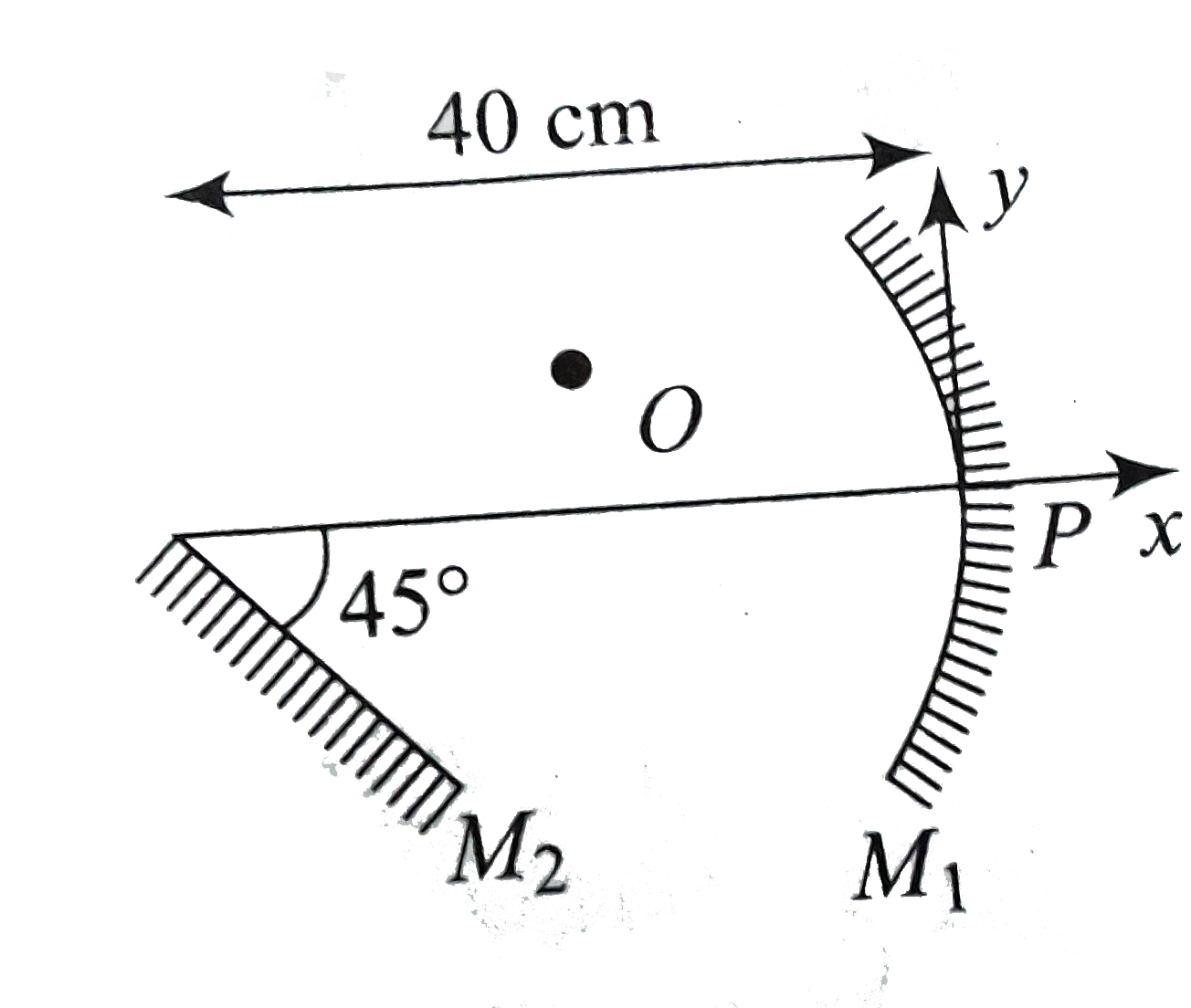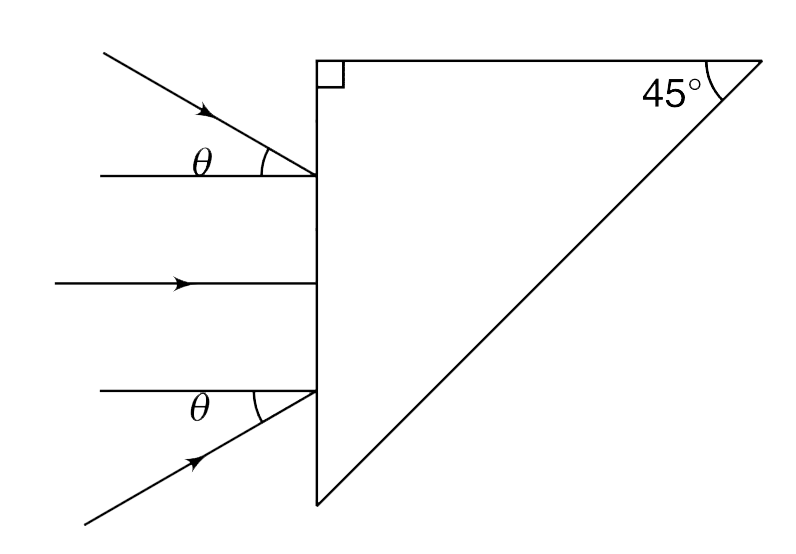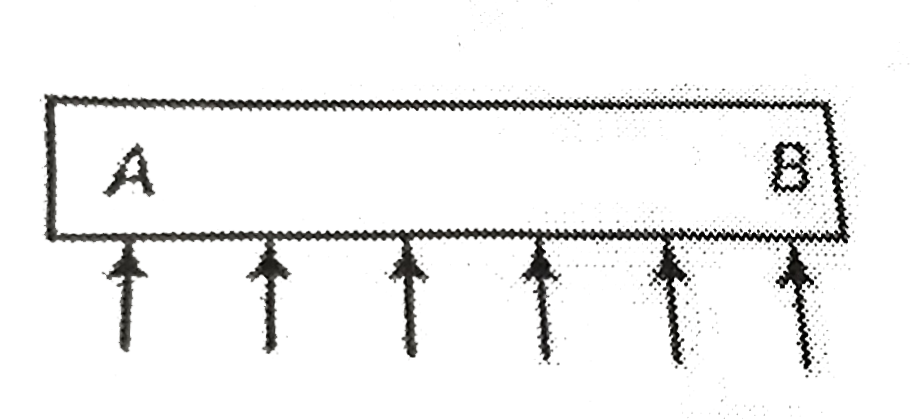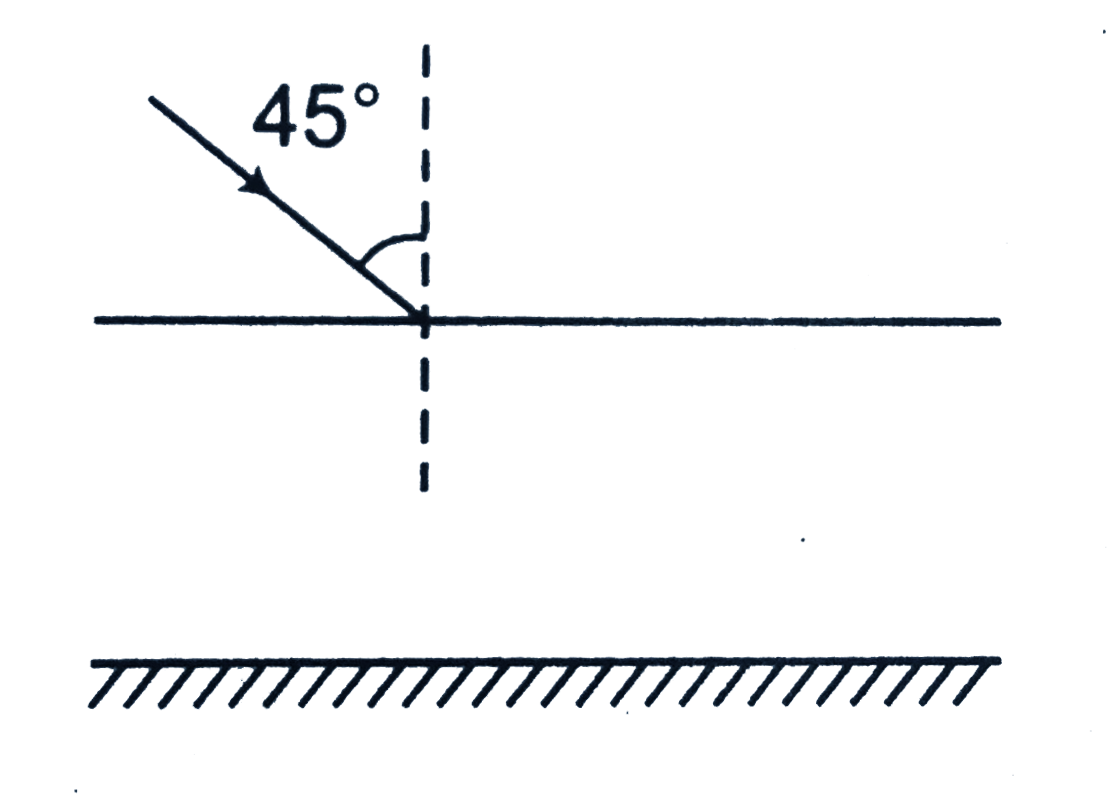Light is incident on a glass block as shown in figure. If θ1 is increased slightly, what happens to θ2

θ2 also increases slightly
θ2 is unchanged
θ2 decreases slightly
θ2 changed abruptly, since the ray experiences total internal reflection
The correct Answer is:c.
As θ1 increases, α also inicreases. So, (90−α) decreases and hence θ2 decreases.

Topper's Solved these Questions
- BOOK - CENGAGE PHYSICSCHAPTER - GEOMETRICAL OPTICSEXERCISE - Assertion-Reasoninig2videos
GEOMETRICAL OPTICS
- BOOK - CENGAGE PHYSICSCHAPTER - GEOMETRICAL OPTICSEXERCISE - Linked Comprehension51videos
GEOMETRICAL OPTICS
- BOOK - CENGAGE PHYSICSCHAPTER - GEOMETRICAL OPTICSEXERCISE - Subjective26videos
GEOMETRICAL OPTICS
- BOOK - CENGAGE PHYSICSCHAPTER - FRICTIONEXERCISE - QUESTION BANK1videos
FRICTION
- BOOK - CENGAGE PHYSICSCHAPTER - GRAVITATIONEXERCISE - Question Bank39videos
GRAVITATION
Similar Questions
A converging beam of light is incident on a right angled isosceles prism as shown in the Figure. The marginal rays in the beam are incident at angle ±θ. The refractive index for the glass of the prism is μ=1.49(=1sin42°) . Find the maximum value of θ for which no light comes out of the hypotenuse surface.
 View Solution
View SolutionA ray of light is incident on a prism of refracting angle A. if θC is the critical angle for the material of the prism with respect to the surrounding air, then:
View Solution
Knowledge Check
- Question 1 - Select One
A ray of light is incident on a parallel-sided glass slab as shown in the figure. The angle of refraction for this ray of light is likely to be :
 A60∘B33∘C57∘D30∘
A60∘B33∘C57∘D30∘ - Question 2 - Select One
A ray of light is incident on a glass slab at an angle of 45∘. If refractive index of glass be 1.6, what is the angle of refraction ?
A45.2∘B30∘C26.2∘D15.2∘ - Question 3 - Select One
When a monochromatic light ray is incident on a medium of refracive indexμwith angle of incidence θ1,the angle of refraction is θr.if θi is changed slightly byΔθi,then the corresponding change in θrwill be-
AΔΘiBμΔθiC1μ.cosθ1cosθr.ΔθiDμ.sinθ1sinθr.Δθi
Rays of light fall on a glass slab (μ>1) as shwon in figure. If μ at A is maximum and at B it is minimum, then what will happen to these rays?
 View Solution
View SolutionA ray of light refracts from medium 1 into a thin layer of medium 2, crosses the layer and is incident at the critical angle on the interface between the medium 2 and 3 as shown in the figure. If the angle of incidence of ray is θ, the values of θ is
 View Solution
View SolutionRays of light fall on a glass slab (μgtl)as shown in the figure. If μ at A is maximum and at b it is minimum, then what will happen to these rays?
 View Solution
View SolutionA ray of light is incident on the surface of a glass plate of thickness t. If the angle of incidence θ is small, the emerging ray would be displaced side ways by an amount
(Take n = refractive index of glass)View SolutionOne side of a glass slab is silvered as shown in the figure. A ray of light is incident on the other side at angle of incidence 45∘. Refractive index of glass is given as √2. The deflection suffered by the ray when it comes out of the slab is
 View Solution
View Solution

